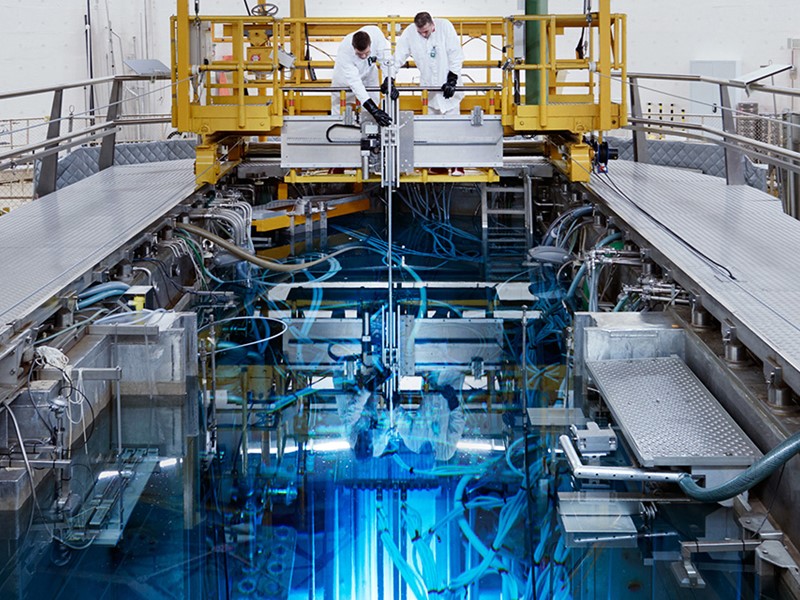Production of medical isotopes in the High Flux Reactor
Production of medical isotopes in the High Flux Reactor
18 March 2021
PETTEN - The High Flux Reactor in Petten, from now on, produces only medical isotopes with low-enriched uranium. Until recently, the productions for NRG’s Belgian partner IRE were still based on high-enriched uranium, because IRE could not fully process low-enriched uranium. But now IRE has, partially, converted its chemical process to low-enriched uranium. This means that NRG can take the final step and end using high-enriched uranium in the HFR.
In the framework of the non-proliferation treaty, a global ban on the use of high-enriched uranium has been agreed because it can be used to make nuclear weapons. During the nuclear summit in The Hague in 2014, the US President Barack Obama agreed with France, Belgium and the Netherlands that the production of medical isotopes would also switch from high-enriched to low-enriched uranium.
Every day, 30,000 patients are helped with medical isotopes from the reactor in Petten. In 2006, the reactor switched from high-enriched to low-enriched fuel. In 2018, NRG and Curium also converted the molybdenum-99 production process in the Petten Molybdenum Production Facility (MPF) to low-enriched uranium. This was a huge step, because it concerned the whole production chain, from purchasing high-enriched uranium, irradiation, chemical processing to waste treatment and disposal. Once again, the Netherlands took the lead in Europe.
"We are delighted that the final step has now been taken and that our partners for the production of medical isotopes from the HFR no longer need high-enriched uranium," says Vinod Ramnandanlal Commercial director NRG. "In fact, in this way we achieve a kind of non-proliferation quality mark for medical isotopes. We are glad that we are now able to fulfil the agreements made at the nuclear summit."
Importance of medical isotopes
The PALLAS reactor will only use low-enriched uranium for both the fuel and the production of medical isotopes.

More information
Contact
For more information please contact

Cora Blankendaal
Press Officer
